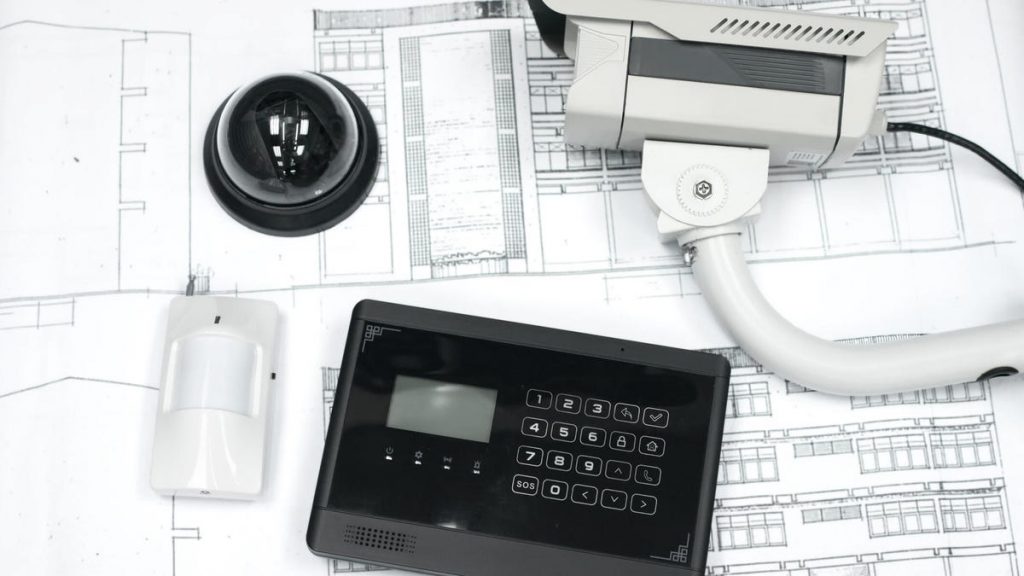With so much smart technology and, yes, even AI packed inside today’s home security systems, users encounter a bewildering number of choices about devices and add-ons. Here’s a secret: While home security companies generally try to sell you everything, not all those pieces of the system are equal — and some are useless or redundant.
That means you can save money by ditching the worst features and focusing on kits that offer only the most useful home security tech. Here’s what I would avoid if you’re getting a new system.
Don’t miss any of our unbiased tech content and lab-based reviews. Add CNET as a preferred Google source.
Read more: How to Turn Your Security Camera Into an All-Purpose Home Care Tool
Alarm touchscreens
In years past a fancy, colorful touchscreen on the wall was the mark of a highly advanced security system with all the bells and whistles. Not so today. With app-based controls, those touchscreens have become less and less convenient, eventually taking up space without reason and raising the costs of a system.
Today, your phone and a simple keypad on the security system hub are usually all you need. Unless you are desperate for another keypad option near the entryway, see if you can cut out the touchscreen and lower your prices.
Temperature sensors and smoke detectors
I don’t think there’s anything wrong with temperature sensors or smoke detectors – they’re very important parts of the smart home. In fact, they’re so important you almost certainly already have them. Smoke detectors are already required by law in certain parts of your home (depending on your state/country). Thermostats, especially smart thermostats with satellite sensors, already do a great job of detecting temperatures throughout your home.
Home security brands may try to upsell you their own temperature or smoke sensor to place in the kitchen or by the fireplace, etc. If your home isn’t so huge that smoke detectors are far away from these spots, you can probably skip these. Or look for devices that can listen for sirens from existing detectors to give you remote notifications as a bonus.
Motion sensors
Motion detectors are a common sensor for home security packages, a mainstay for years that can catch motion in specific rooms or areas and sound alarms. But I don’t think they’re necessary for two reasons.
First, motion detectors just aren’t as useful as access sensors, like open/close sensors that can tell you if a door, drawer, safe or window are opened and sound alarms accordingly. Vibration sensors, which can detecting breaking glass or attempts to break in as well as tampering, can also serve a vital role with highly targeted applications. With those two sensors, there’s not a lot left for motion sensors to do.
Second, motion sensors just aren’t as reliable as the devices I mentioned. They can be finicky, often too sensitive or too dull even after adjustments, and then need to be in the exact right places. Even modern sensors may also be triggered by large or wall-bouncing pets, so dog-friendly homes may have to turn them off when a four-legged friend is around.
If possible, skip or cut down on motion sensors to save money, or purchase them separately from your security system.
Panic buttons
Panic buttons sound like a good idea, whether they are connected to fobs that you can carry around or installed on a wall in a convenient location. But I’m also putting these in the «unnecessary» category, since today we all have SOS and emergency button settings on our smartphones that we can use anywhere, at any time. Or in a pinch, you could ask a smart speaker to call emergency services.
Proprietary smart locks
Far from having a problem with smart locks, I think everyone should get one as long as they don’t mind occasionally replacing batteries. But be wary of smart locks created specifically by a home security company that don’t work well apart from it. Often, these proprietary smart locks suffer from awkward designs, missing features and poor functionality.
Instead, look for a security system that supports third-party smart locks, which are usually superior. ADT, for example, offers useful support for Yale smart locks, and other brands support a variety of third-party lockmakers. Or you could get a smart lock separate from your security system and not worry about connecting it.
This holds true for many smart home add-ons that security systems may offer. Always go for systems that support the latest third-party devices instead of only offering proprietary models.
What home security features are most worth it?
Today’s security systems offer plenty of useful add-ons and settings that I’ve appreciated when testing and securing my home. Access and vibration sensors are always handy when they’re set up to detect opened doors or breaking glass. A compatible security camera is also a great addition, especially if it has two-way audio, since you can immediately tap into a situation if your alarm goes off. An integration with a good third-party smart lock that has lots of support is also welcome.
If you’re still deciding between a security system and a single device, be sure to check out my guides on the best security cameras, best security cams without subscriptions and best security cameras for outdoor use.
